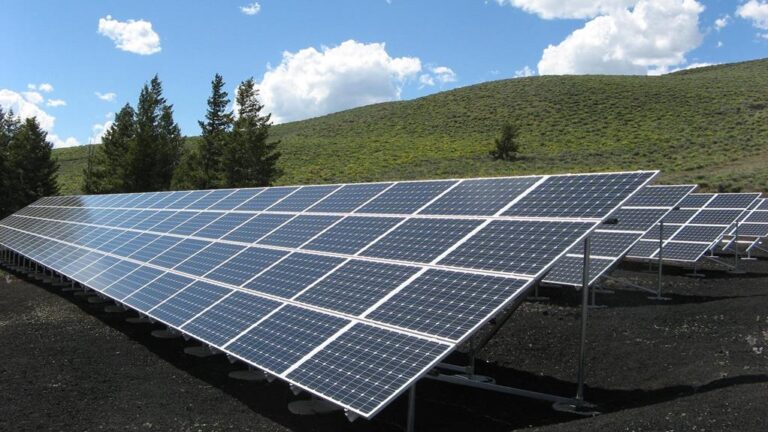What Eco-Friendly Practices Reduce Greenhouse Emissions?
Hey there, eco-warriors! Ready to make a positive impact on our planet? In this article, we’ll explore some kickass eco-friendly practices that can help reduce greenhouse emissions. From energy-efficient home improvements to sustainable transportation options, we’ve got you covered.
We’ll also dive into waste reduction, recycling, renewable energy sources, and conscious consumer choices. So, let’s join forces and create a greener, cleaner world together.
Let’s do this!
Energy-Efficient Home Improvements
We can make a significant impact on reducing greenhouse emissions by implementing energy-efficient home improvements.
One way to achieve this is by replacing old appliances with energy-efficient ones. Energy Star-certified appliances, such as refrigerators, washing machines, and dishwashers, consume less energy and can save up to 30% on electricity bills.
Additionally, upgrading insulation in our homes can greatly reduce energy consumption. Proper insulation prevents heat from escaping during winter and keeps the house cool during summer, reducing the need for excessive heating or cooling. This can be achieved by adding insulation to walls, attic, and floors.
Sustainable Transportation Options
To further reduce greenhouse emissions, implementing sustainable transportation options is crucial.
Public transit alternatives and electric vehicles are two key solutions in this regard.
Public transit offers a collective mode of transportation, reducing the number of individual cars on the road and therefore decreasing emissions. It’s a cost-effective and efficient way to move people, promoting a sense of community and reducing traffic congestion.
Electric vehicles, on the other hand, produce zero tailpipe emissions and are powered by electricity, which can be generated from renewable sources. They’re a cleaner alternative to conventional gasoline-powered vehicles and are becoming increasingly accessible and affordable.
Waste Reduction and Recycling
Continuing our exploration of eco-friendly practices for reducing greenhouse emissions, let’s now delve into the important topic of waste reduction and recycling.
One effective way to reduce waste is through composting techniques. By composting organic waste, such as food scraps and yard trimmings, we can divert it from landfills where it would decompose and release methane, a potent greenhouse gas. Instead, composting allows the waste to break down naturally and produce nutrient-rich soil that can be used in gardening and agriculture.
Another approach to waste reduction is embracing a circular economy, which aims to minimize waste and maximize the value of resources. This involves recycling materials and products, extending their lifespan, and reducing the need for raw materials and energy.
Renewable Energy Sources
Renewable energy sources play a significant role in reducing greenhouse emissions. Solar power and wind turbines are two key examples of these sources.
Solar power harnesses the energy from the sun and converts it into electricity. By using solar panels to generate electricity, we can reduce our reliance on fossil fuels, which emit greenhouse gases when burned.
Wind turbines, on the other hand, harness the power of the wind to generate electricity. This clean and renewable source of energy produces zero greenhouse gas emissions and has the potential to provide a significant portion of our energy needs.
Investing in solar power and wind turbines not only helps reduce greenhouse emissions but also promotes sustainable energy practices that contribute to a cleaner and healthier planet.
Conscious Consumer Choices
As conscious consumers, we can make a significant impact in reducing greenhouse emissions by making informed choices about the products we purchase and the companies we support. Here are four ways we can contribute to a more sustainable future:
- Choose ethical fashion: Opt for clothing made from sustainable materials like organic cotton or recycled fabrics. Support brands that prioritize fair labor practices and minimize their environmental impact.
- Make sustainable food choices: Buy locally sourced, organic produce whenever possible. Reduce meat consumption and choose plant-based alternatives. Support companies that prioritize sustainable farming practices and strive for minimal packaging waste.
- Support eco-friendly packaging: Look for products that use minimal or recyclable packaging materials. Choose products with eco-friendly certifications like FSC (Forest Stewardship Council) or BPA-free plastics.
- Consider the lifecycle of products: When purchasing electronics or appliances, choose energy-efficient options with a long lifespan. Repair and reuse items instead of buying new ones whenever possible.
Related Post: Eco-Friendly Food Packaging: Green is The New Black.
Conclusion
In conclusion, by adopting eco-friendly practices such as:
- Energy-efficient home improvements
- Sustainable transportation options
- Waste reduction and recycling
- The use of renewable energy sources
- Conscious consumer choices
We can reduce greenhouse emissions and make a positive impact on the environment.
These actions are like seeds that, when planted and nurtured, grow into a flourishing garden of sustainability. They help to combat climate change and create a brighter future for generations to come.
Let’s embrace these practices and be the change our planet needs.







2 Comments
Comments are closed.